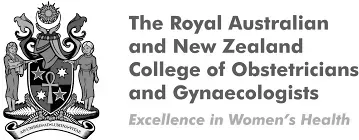Hysterectomy
What is a Hysterectomy?
A hysterectomy is a surgical procedure to remove the uterus. This surgery can be necessary for various medical reasons, including uterine fibroids, endometriosis, pelvic pain, abnormal bleeding, cancer, or other gynaecological issues.
Who is Suitable for Hysterectomy?
Candidates for a hysterectomy typically include women with:
- Uterine fibroids causing pain or bleeding
- Endometriosis not responding to other treatments
- Persistent pelvic pain
- Uterine prolapse
- Abnormal or heavy vaginal bleeding not controlled by other treatments
- Gynecologic cancers (uterine, ovarian, cervical)
- Chronic pelvic inflammatory disease (PID)
Hysterectomy should not be considered a first-line treatment for pelvic pain, pelvic organ prolapse, or stress urinary incontinence unless other therapies have been ineffective or not tolerable.
Benefits of a Hysterectomy
Hysterectomy can provide many benefits for women with certain conditions, including:
- Relief from heavy or prolonged bleeding: A hysterectomy can stop abnormal vaginal bleeding caused by fibroids, endometriosis, or cancer.
- Relief from chronic pain: A hysterectomy may relieve chronic pelvic pain caused by fibroids, endometriosis, or uterine prolapse.
- Improved quality of life: A hysterectomy can improve a woman's quality of life by reducing the symptoms of heavy bleeding, chronic pain, and other conditions that can affect daily activities.
- Eliminating cancer risk: A hysterectomy can remove the uterus and ovaries, markedly reducing cervical and ovarian cancer risk.
- Improved bladder function: A hysterectomy can improve bladder function if heavy bleeding or uterine fibroids are causing bladder or urinary tract pressure.
- Improved sexual function: A hysterectomy can improve sexual function if heavy bleeding or chronic pain affects a woman's ability to enjoy sexual activity.
Types of Hysterectomy
The main types of hysterectomy are:
- Total hysterectomy: This is the most common hysterectomy in which the uterus fallopian tubes and cervix are removed.
- Subtotal hysterectomy (also called a supracervical hysterectomy): In this procedure, only the upper part of the uterus is removed, leaving the cervix intact.
- Radical hysterectomy: This is a more extensive procedure that involves removing the uterus, cervix, upper part of the vagina, and nearby lymph nodes. This is typically used to treat cervical or endometrial cancer.
- Bilateral salpingo-oophorectomy in addition to hysterectomy: This procedure removes the ovaries, fallopian tubes, and the uterus.
There are three ways to carry out a hysterectomy:
- Laparoscopic Hysterectomy
- Vaginal Hysterectomy
- Abdominal Hysterectomy
Laparoscopic Hysterectomy
What is a Laparoscopic Hysterectomy?
Total Laparoscopic Hysterectomy is a surgical procedure for removing the uterus and cervix. In this technique, the uterus is separated from its attachments to the pelvis and removed through the vagina. The fallopian tubes are often removed at the same time. The ovaries may be kept in place or removed depending on individual factors. Your doctor will discuss these options with you.
Will Your Ovaries be Removed at the Time of Hysterectomy?
One or both ovaries and fallopian tubes may be removed simultaneously as a hysterectomy. When both ovaries and tubes are removed, it is called a bilateral salpingo-oophorectomy (BSO). If the ovaries are removed before menopause, the sudden loss of the main source of female hormones will cause immediate menopause (surgical menopause). This may cause more severe symptoms than natural menopause. It is advisable to discuss hormone replacement options with your doctor before your surgery if you are planning to have your ovaries removed. You should consult with your doctor about the advantages and disadvantages of removing your ovaries during a hysterectomy.
New research has suggested that the fallopian tubes are the source of some types of ovarian cancer, and it is generally thought that when a hysterectomy is performed. The ovaries are being left in (for hormonal support), and the tubes should be removed to reduce the future risk of ovarian cancer. It is known that this will not eradicate the risk of ovarian cancer.
What Precautions Should Be Taken Before a Laparoscopic Hysterectomy?
You can continue taking your regular medications unless you are advised otherwise. If you take a non-steroidal anti-inflammatory drug, discontinuing this one week before surgery is often recommended.
You will be admitted to the hospital on the day of your operation. You will meet the anaesthetist just before surgery to discuss the anaesthetic and any concerns you may have.
How is a Laparoscopic Hysterectomy Performed?
The procedure is done under general anaesthesia in the operating room.
A small incision is made at your umbilicus. The abdomen is inflated with gas, and a fibre-optic instrument called a laparoscope is inserted to view the internal organs.
Further, small incisions are made on your abdomen through which tiny surgical instruments are passed. Then, the uterus and cervix are removed with or without ovaries and tubes through the vagina. The current recommendation is to remove both fallopian tubes concurrently, which is associated with a lower incidence of ovarian cancer. The total operating time is about 90 minutes.
What Can Be Expected During the Recovery Period?
You will be in the recovery room when you wake up from anaesthesia. You may feel sleepy for the next few hours. You may have shoulder or back pain because of the gas used in the procedure. It resolves within a day or two. You will start eating and generally drinking within a short period.
You may feel discomfort or tired for a few days after the procedure. Constipation is prevalent. You will often be in the hospital for two days following the procedure. Notify your doctor if the pain and nausea do not settle or worsen. You should avoid strenuous activities or exercise until you recover completely. Most women will take two weeks off and return to work at the start of the third week. Your surgeon will review you again one week after your discharge from the hospital.
You may have vaginal discharge (old blood) for several days after the procedure. You can return to light activity after two weeks, but complete recovery may take longer. After the procedure, you will no longer be menstruating and unable to conceive. Avoid intercourse for six weeks - to allow the top of the vagina adequate time to heal.
Many women are concerned with a possible change in their sex life after a hysterectomy. However, many women feel liberated now, free of troublesome bleeding, pain with periods, discomfort from prolapse and no further need for contraception. Libido can be improved with an improvement in well-being. A hysterectomy does not affect the ability to orgasm.
Vaginal Hysterectomy
What is a Vaginal Hysterectomy?
A vaginal hysterectomy is an alternative surgical procedure to an abdominal hysterectomy. In this procedure, the uterus is removed through the vagina rather than through the incision in the abdomen.
What are the advantages of vaginal hysterectomy over abdominal hysterectomy?
Recovery following vaginal hysterectomy is much faster than abdominal hysterectomy. You may be discharged from the hospital in a day or two, and you can return to your daily activities within a few weeks after the surgery. However, no heavy lifting or straining should be done for 6-8 weeks.
How is a Vaginal Hysterectomy Performed?
You may be given general or regional anaesthesia. An incision is made in the vagina, and the uterus is removed. The incision in the vagina is then closed with absorbable stitches.
What to Expect After a Vaginal Hysterectomy?
Recovery after a vaginal hysterectomy is generally fast. Medicines are prescribed for pain and to prevent infection.
Bleeding from the vagina is normal and will last a few weeks after the surgery. Using sanitary pads should be preferred as tampons increase the risk of infection. You will not have periods and cannot conceive after the vaginal hysterectomy.
If ovaries and fallopian tubes are removed along with the uterus in a vaginal hysterectomy, you may have vaginal dryness or hot flushes, the symptoms of menopause.
These may be treated with medicines if required. You can do everyday activities around two weeks after the surgery. Still, you should not lift heavy objects or have vaginal intercourse until the sixth week postoperatively after your review with Dr Alyousif.
Abdominal Hysterectomy
A 10 cm incision is made in the lower abdomen. This is performed if numerous fibroids significantly enlarge the uterus or there is gross pelvic pathology, including adhesions. It is also performed in cases of cancer. Sometimes, this incision has to be vertical [up and down the middle of the abdomen] rather than transverse [horizontally across just above the pubic hair.
What Can I Expect from an Abdominal Hysterectomy?
You will be in the hospital for about 3 -5 days. It will take about four weeks to recover at home. Most women will return to work by the start of the (6th) week.
What if I Come Across Any Problem During the Recovery Period?
You should seek immediate medical attention if you experience any of the below-mentioned conditions:
- Fever
- Offensive vaginal discharge or heavy bleeding
- Severe nausea or vomiting
- Inability to empty your bladder or bowels
- Severe pain
- Chest pain/shortness of breath.
Hysterectomy Prognosis
Hysterectomy is a generally safe and effective procedure for treating certain conditions, such as uterine fibroids, endometriosis, and abnormal vaginal bleeding. The prognosis for a hysterectomy is usually good, but it does depend on the individual woman and her specific condition.
Overall, the prognosis for a hysterectomy is generally good, and most women experience significant improvement in their symptoms and overall quality of life after the surgery. However, it's essential to discuss the potential risks and benefits of the surgery with your doctor and carefully consider your individual needs and preferences before deciding.
Hysterectomy Risks
- Infection: There's a risk of infection at the incision site or internally.
- Bleeding: There can be significant blood loss during surgery.
- Anaesthesia Risks: Complications from anaesthesia are possible.
- Injury to Surrounding Organs: Potential damage to the bladder, intestines, or other organs.
- Early Menopause: If the ovaries are removed, it can lead to early menopause.
What if Hysterectomy is Delayed?
Delaying a hysterectomy can have advantages and disadvantages, depending on the woman's condition and specific needs.
Advantages of delaying a hysterectomy:
- Alternative treatments may be effective
- Pregnancy may be possible
- Time to consider options
Disadvantages of delaying a hysterectomy:
- Symptoms may worsen
- Cancer risk
Every case is different. A woman's condition, symptoms, and preferences should determine whether to delay or proceed with a hysterectomy.
Cost of Hysterectomy
- Public Hospital: The cost can be significantly lower in public hospitals, particularly if Medicare covers you. However, waiting times may be longer.
- Private Hospital: In private hospitals, costs can range from AUD 1,500 to AUD 5,000 or more. This includes hospital fees, surgeon’s fees, anaesthetist’s fees, and other associated costs. Private health insurance can help cover some of these expenses, but out-of-pocket costs can still be substantial.
It’s advisable to check with your healthcare provider and insurance company to get a detailed estimate of the costs involved and what portion will be covered by your insurance.



Contact
Melbourne IVF
268 Manningham Rd, Templestowe Lower VIC 3107
New Patient - (03) 9006 5570
Existing Patient - 03 9473 4444
Practice Hours:
Mon - Fri 7:00 am to 4:30 pm
Sat - by prior arrangement
All Rights Reserved | Dr Yousif Alyousif
